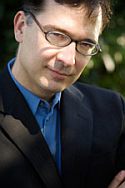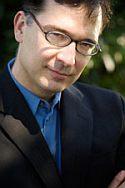While speaking with one of the singers of the Pacific Collegium during the intermission of their Sunday concert giving the complete motets of Johann Sebastian Bach, I mentioned that I came to love these works only via recordings, while attending the Carter centenary at Tanglewood this past summer. I remarked how moved I was finally to hear them performed live, and how much more effective they are done in such a superb acoustic space as St. Paul’s Episcopal Church in Oakland (rather than through a car stereo).

It was much the same experience I had had hearing many of Elliott Carter’s pieces live for the first time at Tanglewood. The composers seem to me more alike than different. Above all, their music is about craftsmanship, however powerful the emotional content might be. As in Carter’s Double Concerto, the antiphonal choruses (sung here two on a part) of Bach’s motets are spatially conceived, and come to life when the disparate groups of musicians interact, as if the two planes of heaven and earth could both remain at a great distance and yet touch at crucial moments.
Bach’s motets were written for specific funeral services, sometimes in a matter of days for friends and colleagues who passed away suddenly. Despite their serious intent, it is hard to imagine a more uplifting and joyous concert than this one.
The rousing Lobet den Herrn, alle Heiden is a setting of Psalm 117 for single chorus. Conductor Christopher Kula set firm and lively tempos while allowing the phrases to breathe and soar. This piece was reprised following intermission as a singalong, but there was no slackening the tempos for the newcomers. Being one of the plucky participants myself, I will say only that it was thrilling to find my voice doing these gymnastics at sight. There were also a few youngsters who came forward and held their own.
Tracing Life’s Trajectory
The intricate Komm, Jesu, komm, for double chorus, is one of the most touching of the motets, one that recognizes the inevitability of life’s travails. But the lilting phrase on the words “You are the righteous way” makes you forget all difficulties, and the elaborations on those words show that Bach found endless delight in that simple phrase. Kula drew just the right dynamics from the sopranos and altos as their lines passed from chorus to chorus, illustrating how graceful the spirit’s path through life, with its ups and downs, can be made to sound. (Incidentally, this is also perfect music to listen to while driving through the rolling hills of the Berkshires.)
Furchte dich nicht, ich bin bei dir (Fear not, I am with you), with a text from the Book of Isaiah, was taken at a tempo that made me a little anxious at first. Despite some ragged ensemble at the beginning, it settled down into a powerful depiction of righteous strength. Later, there came some of the most reassuring and comforting music ever written, in the passage where the text completely identifies comforter and comforted (“Da du mich und ich dich”).
Der Geist hilft unser Schwachheit auf (The Spirit helps us in our weakness) is so full of warmth that you would never suspect it was written for a funeral. Composed for the rector of the Thomasschule (Bach’s boss?), it wears its learnedness lightly while celebrating the academic tradition in the passage “he who searches (forschen) the heart’s intention knows what the will of the Spirit is.” How meaningful this phrase must have been for Bach, with his unrivaled mastery of counterpoint. The final “Hallelujah” is sober and restrained, as might befit a fellow professor.
Intricate, Expressive Trios
The centerpiece of the program was the longest and structurally most complex of Bach’s motets, Jesu, meine Freude (Jesus, my joy). In 11 movements, it is the only one of the motets to make use of the New Testament, with all of the even-numbered movements containing verses from the Book of Romans. Two of these are trios, the first featuring the remarkable singing talents of Tonia D’Amelio, Cathy Stadecker, and Emily Ryan in the passage about “the law of the Spirit,” which was enchanting and truly expressive of the liberation espoused in the text. Equally admirable were Clifton Massey, Joseph Sargent, and Raymond Martinez, who sang, “If Christ is in you, though the body is dead, yet the spirit is alive.” Massey’s wondrously lilting alto voice made me believe in the Resurrection.
The haunting a cappella chorus “Gute Nacht, o Wesen,” which bids good night to all things earthly, was of such serenity that one felt more than acceptance of death; there was actually the sense of taking a rest from the pleasures of earthly life, bidding them a fond farewell.
The final work was Singet dem Herrn (Sing to the Lord a new song). It was a perfect closer for this remarkable concert. The smiles on the faces of the performers at the final Hallelujah were for the composer. Despite the best efforts of a truly inspired group of talented singers — and, I must add, of the excellent band of strings, winds (period oboes and bassoons), and continuo that backed them — the man who came out on top was the old cantor himself: J.S Bach, 323 years young.

